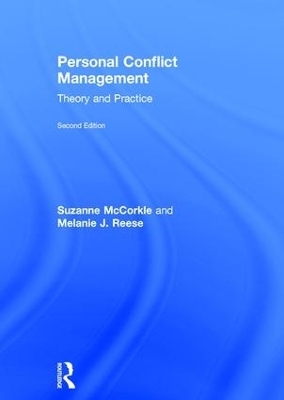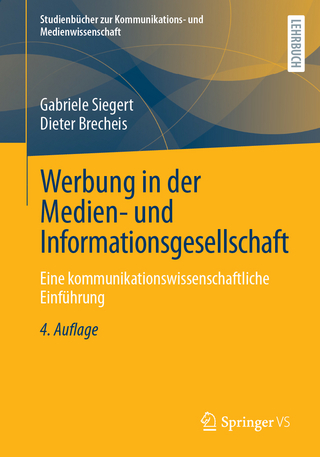
Personal Conflict Management
Routledge (Verlag)
978-1-138-21098-1 (ISBN)
- Titel erscheint in neuer Auflage
- Artikel merken
Suzanne McCorkle is an Emerita Professor of Public Policy and Administration, as well as Director of Conflict Management Studies at Boise State University. Melanie J. Reese is Dispute Resolution Coordinator for the Idaho Department of Education and Professor Emerita at Boise State University.
Contents
List of Toolbox Resources
List of Cases
Preface
Acknowledgments
SECTION I • Interpersonal Conflict Causes and Patterns 1
1 Conflict in Everyday Life
What is interpersonal conflict?
Interpersonal conflict is a struggle
Interpersonal conflict occurs among a small number of people
Interpersonal conflict requires at least a minimum amount of interdependence
Conflict includes interference with goal achievement
Conflict is perceived
Interpersonal conflict is different from argument
Seven assumptions about interpersonal conflict
Beneficial aspects of interpersonal conflict
Summary
Chapter resources
2 Conflict Management Theories
The purpose of theory
Nature versus nurture
Communication theory
Theories influencing conflict management studies
Early ideas about conflict
Post-World War II Influences on conflict theory
Constructive and destructive conflict
Attribution theory
Exchange theory
Interaction theories
Systems theory
Summary
Chapter resources
3 Competitive and Cooperative Conflict Approaches
The competitive world
The cooperative approach
Interests versus positions
Which approach to conflict is best?
Supportive and defensive climates
Summary
Chapter resources
4 Causes of Conflict
Conflict topics are not necessarily conflict causes
Conflict behaviors are motivated by reasons that make sense
Conflict behaviors are learned
Goal interference causes conflict
Four main goals during conflict
Content goals
Process goals
Relationship goals
Image/face goals
Perception patterns affect how goals are interpreted
Goals are dynamic
Skills to enhance goal analysis and development
Summary
Chapter resources
5 How Sex/Gender, Race, Culture, and Generation Affect Conflict
Sex/Gender
Race
Culture
High/low-cultural context
Collectivism and individualism
Cultural conflict management style
Age and generation
The taking of privilege
Mastering conflict management research
Summary
Chapter resources
6 How Power, Trust, and Humor Affect Conflict
Power
Distributive power
Situational power
Integrative power
Power management
Trust
Humor
Sources of conflict patterns
Summary
Chapter resources
SECTION II: Conflict Management Skills
7 Listening and seeking information
The listening process
Barriers to effective listening
Listening in competitive and cooperative bargaining
Types of listening
Eight steps for effective listening during conflict
Consciously choose the conflict management mindset
Give the other person your momentary full attention
Evaluate which type of listening best fits the situation
Deal with emotions before dealing with substance
Ask questions to get information
Give information the other person needs to know
Frame or reframe onto common ground where agreement is possible
Check mutual understanding while problem solving
Summary
Chapter resources
8 Conflict Style and Emotional Intelligence
What is style?
Personality styles
The Meyers Briggs Type Indicator
The Gregorc styles Model
Social style model
Conflict management styles
The five styles of conflict management
Three conflict management styles
Conflcit Styles across cultures
Communication styles that impact conflict
Escalators and fractionators
Conversational style
Emotional Intelligence
Transforming dysfunctional communication
Summary
Chapter resources
9 Negotiation
What is negotiation?
Contrasting approaches to negotiation
Competitive negotiation
Ineffective competition versus effective competition
Ineffective competition versus effective competition
Competitive negotiation tactics
Cooperative negotiation
Preparing for cooperative negotiation
Cooperative negotiation tactics
The choices negotiators make
Moving from competition to cooperation
Tactics to move competitors to collaboration
Summary
Chapter resources
10 Conflict Assessment
Understanding conflict from the inside out
Simpler conflict analysis tools
Locating goal interference
Mapping
Comprehensive conflict analysis tools
Comprehensive conflict checklist
Conflict road map
Awareness wheel
The imagined interaction
Transformation is the key to changing conflict
Summary
Chapter resources
SECTION III: Conflict in Specialized Circumstances
11 Bullies and Difficult People
An overview of difficult encounters
Critical insights about difficult people
The first critical insight: Distrust first impressions
The second critical insight: You can be the change agent
The third critical insight: Build self awareness
The fourth critical insight: Look for hidden interests
Skills when facing difficult encounters
Four-step feedback
Dealing with interruptions
Responding to unearned criticism
Bullying
Defining bullying
School bullying
Workplace bullying
Causes of bullying
The bullying process
Bystanders
Strategies for victims
Summary
Chapter resources
12 Mediation and Other Conflict Interventions
Approaches to solving conflict
Power-based intervention
Rights-based intervention
Interest-based intervention
Conflict coaching
Third-party resolution processes
Mediation
Why mediate?
Benefits and disadvantages of mediation
Mediator responsibilities
Mediator approaches
Intervention styles
Outcome styles
The balanced model of mediation
The opening statement
Storytelling
Agenda building
Problem solving
Testing and writing the agreement
Closure
Summary
Chapter resources
13 Managing the Aftermath: Anger, Apology, Forgiveness, and Reconciliation
Anger
Anger and strong emotions
The recipient of anger or strong emotions
Apologies
Fake, semi, and sincere apologies
Culturally appropriate apologies
Barriers to apology
The strategic side of apology
Forgiveness
Defining forgiveness
Forgiving versus unforgiving
Benefits of forgiving
Actions leading to forgiveness
Reconciliation
Defining reconciliation
When reconciliation is right
Summary
Chapter resources
SECTION IV: Conflict in Context
14 Families and Conflict
The family as a communication system
Role of communication in families
Types of families
Stories sustain family identity
Rules structure family behavior
Communication affects satisfaction levels
Conflict and the family
Conflicts topics and causes change as families change
Patterns of family conflict
Judgmental biases and conflict
Privacy management
The dark side of family conflict
Conflict management skills for families
What makes a family strong?
Summary
Chapter resources
15 Conflict in Intimate Relationships
Common topics among intimates
Conflict in relationships: Good or bad?
The Cascade model and the "Four Horsemen"
Emotional disengagement
Gender and personality factors in relationships
Understanding relationship conflict: Lifespan, types and patterns
Relationship maintenance
When conflict turns violent
Summary
Chapter resources
16 Conflict in the Workplace
The workplace is a unique context
Workplace communication
The nature of groups
Norms
Roles
Leadership
Conflict in the work setting
Causes of workplace conflict
Effects of conflict in the workplace
Preventing and managing conflict at work
Emotional intelligence and privacy management
Conflict management from the supervisor/leader’s viewpoint
Conflict management from the employee’s viewpoint
Groupthink
Group conflict
Conflict management systems
Summary
Chapter resources
17 Conflict and Social Media
The world of social Media
Theories of online behavior
Facebook and conflict
Cyberbullying and drama
Incivility
Summary
Chapter resources
Appendix
Glossary
| Erscheinungsdatum | 30.01.2018 |
|---|---|
| Zusatzinfo | 78 Tables, black and white; 3 Line drawings, black and white; 3 Illustrations, black and white |
| Verlagsort | London |
| Sprache | englisch |
| Maße | 174 x 246 mm |
| Gewicht | 748 g |
| Themenwelt | Geisteswissenschaften ► Geschichte |
| Sozialwissenschaften ► Kommunikation / Medien ► Kommunikationswissenschaft | |
| Sozialwissenschaften ► Kommunikation / Medien ► Medienwissenschaft | |
| ISBN-10 | 1-138-21098-6 / 1138210986 |
| ISBN-13 | 978-1-138-21098-1 / 9781138210981 |
| Zustand | Neuware |
| Informationen gemäß Produktsicherheitsverordnung (GPSR) | |
| Haben Sie eine Frage zum Produkt? |
aus dem Bereich



